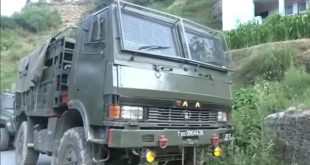 Crew Escape System: Ensuring Safe Space Travel for India’s Gaganyaan Mission
Crew Escape System: Ensuring Safe Space Travel for India’s Gaganyaan Mission
India is all set to make history with its first human mission to space, Gaganyaan. In preparation for this landmark mission, the Indian Space Research Organisation (ISRO) is conducting a critical flight test of the Crew Escape System (CES). Scheduled for launch on 21st October, the test vehicle named TV D-1 will play a pivotal role in ensuring the safety of astronauts in space. In this article, we’ll delve into the specifics of the TV D-1 mission and why the Navy will remain on high alert during the testing.
The Role of VIKAS in TV D-1
The primary objective of the upcoming test is to evaluate the performance of the flight and test the sub-systems of the test vehicle. The TV D-1 mission features a test vehicle that measures approximately 35 meters in length and weighs around 44 tons. This test vehicle employs a modified VIKAS engine and operates on liquid propellant.
Testing Procedure
The TV D-1 mission involves a sequence of events that span approximately 531.8 seconds, or roughly 9 minutes. ISRO’s Crew Module, weighing 4,520 kilograms, consists of a single-wall aluminum structure with no pressure. After liftoff, approximately 61 seconds into the launch, the Crew Escape System will detach from the test vehicle at an altitude of 11.9 kilometers. Subsequently, 91 seconds after liftoff, at an altitude of 16.9 kilometers, the Crew Module will separate from the Crew Escape System.
Why the Navy is on Alert During Testing
The Crew Module, equipped with parachutes, is set to make a safe landing in the sea, nearly 10 kilometers from the coast of Sriharikota. During this phase, the Indian Navy will remain on high alert. It’s worth noting that the recovery of the Crew Module from the sea has been entrusted to the Indian Navy. After 531.8 seconds of the rocket’s flight, the Crew Module will splash down into the sea, approximately 10 kilometers from the Sriharikota launch pad. It will continue to float until it is recovered by the Indian Navy’s recovery vessel and brought to the shore.
Preparing for Manned Missions
The Crew Escape System and the test vehicle will land about 14 kilometers from the coast of Sriharikota. This successful test vehicle serves as a stepping stone for India’s Gaganyaan mission. ISRO has stated that the success of this test vehicle will pave the way for future tests and manned missions. It represents a significant milestone in ensuring the safety of astronauts during space travel.
In conclusion, ISRO’s TV D-1 mission is a crucial step in India’s ambitious journey into space exploration. The successful testing of the Crew Escape System is a testament to India’s commitment to astronaut safety, which is of paramount importance in any space mission. With each successful mission, India gets one step closer to achieving its goal of sending humans into space.
 Suspense Crime Sach Ka Dam
Suspense Crime Sach Ka Dam


